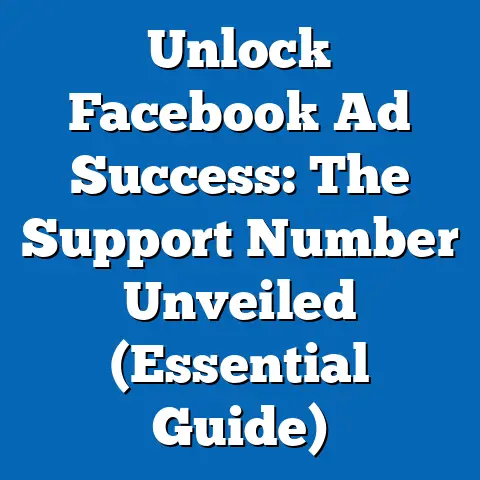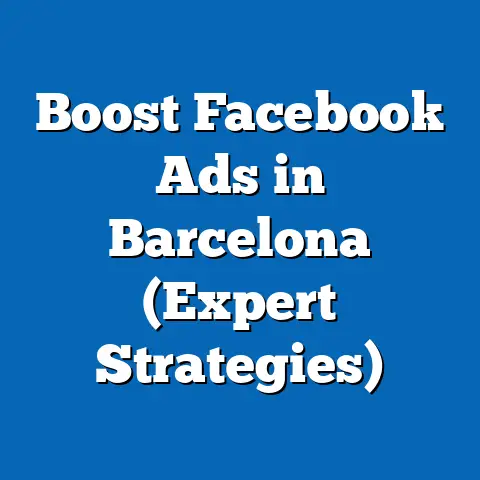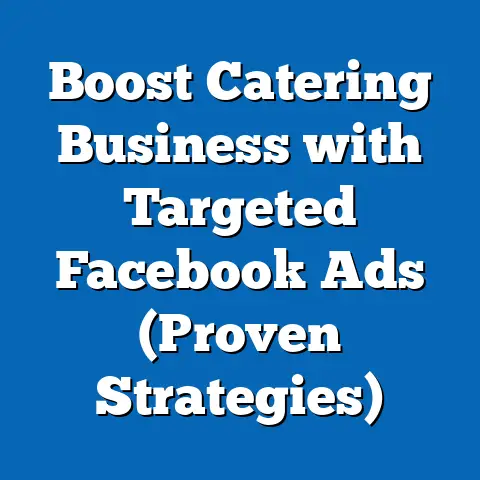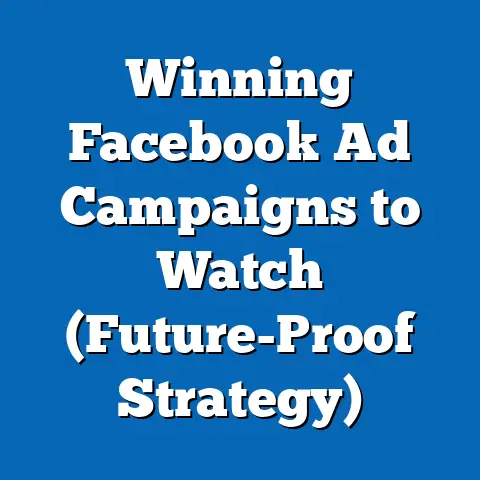Boost Massage Practice with Top fb ad Strategies (Expert Tips)
Picture this: a serene massage studio, bathed in soft, warm light, the air filled with the gentle scent of lavender. Calming music plays softly in the background. A client walks in, shoulders tight, stress etched on their face. But as they’re greeted by a friendly massage therapist, a sense of relief washes over them. This is the sanctuary you offer, a haven from the daily grind.
In today’s fast-paced world, self-care is no longer a luxury; it’s a necessity. And massage therapy plays a crucial role in promoting physical and mental well-being. But how do you, as a massage therapist, connect with those who desperately need your services? How do you ensure a steady flow of appointments in a competitive market?
That’s where the power of Facebook advertising comes in. I’ve spent years helping businesses like yours harness the potential of Facebook ads, and I’m here to tell you, it can be a game-changer. It’s not just about running ads; it’s about understanding your audience, crafting compelling content, and strategically targeting those who will benefit most from your expertise.
This guide is your roadmap to unlocking the potential of Facebook advertising for your massage practice. I’ll walk you through each step, from identifying your ideal client to measuring the success of your campaigns. Let’s dive in and discover how you can transform your practice and help more people experience the healing power of touch.
Understanding Your Target Audience
Before you even think about creating an ad, you need to know who you’re talking to. Understanding your target audience is paramount. It’s the foundation upon which all your advertising efforts will be built.
Think about it: are you primarily targeting athletes seeking muscle recovery? Busy professionals looking to de-stress? Expectant mothers in need of prenatal massage? Or perhaps seniors looking for relief from arthritis pain? Each of these groups has different needs, pain points, and online behaviors.
Here’s a breakdown of key factors to consider:
- Age and Gender: Are your services more appealing to a specific age group or gender?
- Location: Are you targeting people within a specific radius of your practice?
- Lifestyle: What are their hobbies and interests? Are they into fitness, yoga, mindfulness, or other wellness activities?
- Pain Points: What are the common problems they’re facing? Stress, back pain, muscle tension, anxiety?
Creating Customer Personas
To truly understand your target audience, I recommend creating detailed customer personas. These are fictional representations of your ideal clients, based on research and data.
For example, you might create a persona named “Sarah,” a 35-year-old marketing manager who works long hours and experiences chronic neck and shoulder pain. Sarah is interested in yoga, healthy eating, and stress management. She’s active on social media and often searches for massage therapists online.
By creating personas like Sarah, you can visualize your ideal client and tailor your ad content to resonate with their specific needs and desires. This allows you to craft ads that speak directly to them, addressing their pain points and highlighting the benefits they’ll receive from your services.
Takeaway: Understanding your target audience is the first step to creating effective Facebook ads. Develop customer personas to visualize your ideal clients and tailor your messaging accordingly.
Setting Clear Advertising Goals
Now that you know who you’re talking to, let’s define what you want to achieve. Setting clear advertising goals is crucial for measuring the success of your campaigns. Without a defined objective, you’re essentially shooting in the dark.
What do you want to accomplish with your Facebook ads? Here are some common goals for massage therapists:
- Increase Brand Awareness: Introduce your practice to a wider audience and establish yourself as a trusted provider.
- Promote a Special Offer: Attract new clients with a discounted massage package or introductory rate.
- Drive Bookings: Encourage potential clients to schedule an appointment directly through your ad.
- Generate Leads: Collect contact information from interested individuals to follow up with later.
- Increase Website Traffic: Drive more visitors to your website to learn more about your services.
The SMART Framework
To ensure your goals are effective, use the SMART framework:
- Specific: Clearly define what you want to achieve. For example, “Increase bookings by 20%.”
- Measurable: Establish how you’ll track your progress. For example, “Track the number of appointments booked through Facebook ads.”
- Achievable: Set realistic goals that are within your reach.
- Relevant: Ensure your goals align with your overall business objectives.
- Time-bound: Set a deadline for achieving your goals. For example, “Increase bookings by 20% within the next three months.”
By setting SMART goals, you’ll have a clear roadmap for your advertising efforts and a way to measure your success. This will allow you to optimize your campaigns and maximize your ROI.
Takeaway: Define clear, measurable, achievable, relevant, and time-bound (SMART) goals for your Facebook ad campaigns. This will help you track your progress and optimize your results.
Crafting Compelling Ad Content
This is where the magic happens! Compelling ad content is the key to capturing attention and driving engagement. In a sea of social media noise, your ad needs to stand out and resonate with your target audience.
Here are the essential elements of effective ad copy:
- Strong Hook: Start with a captivating headline or opening sentence that grabs attention. For example, “Stressed out? Melt away tension with a relaxing massage.”
- Clear Messaging: Clearly communicate the benefits of your services. Focus on how you can solve their pain points and improve their well-being.
- Persuasive Call-to-Action (CTA): Tell people exactly what you want them to do. Use action-oriented language like “Book Your Massage Today,” “Learn More,” or “Get a Free Consultation.”
Storytelling Techniques
One of the most effective ways to connect with potential clients is through storytelling. Share a story about a client who experienced significant relief from their pain or stress after receiving massage therapy. This will create an emotional connection and make your ad more relatable.
High-Quality Visuals
Don’t underestimate the power of visuals! High-quality images and videos are crucial for showcasing the massage experience and the ambiance of your practice.
- Use professional photos: Invest in professional photography to capture the essence of your studio and the skills of your therapists.
- Showcase the ambiance: Highlight the calming atmosphere of your studio with images of soft lighting, comfortable massage tables, and relaxing decor.
- Create short videos: Produce short videos that demonstrate the benefits of massage therapy and showcase your therapists in action.
Example:
Instead of saying, “We offer massage therapy,” try this:
“Imagine sinking into a warm, comfortable massage table, the gentle scent of lavender filling the air. Our skilled therapists will melt away your tension and leave you feeling refreshed and rejuvenated. Book your escape today!”
Takeaway: Craft compelling ad content that captures attention, clearly communicates the benefits of your services, and includes a persuasive call-to-action. Use storytelling techniques and high-quality visuals to create an emotional connection with potential clients.
Utilizing Facebook Ad Features
Facebook offers a variety of ad formats to suit different marketing objectives. Understanding these options and how to leverage them effectively is crucial for maximizing your advertising ROI.
Here are some of the most popular ad formats for massage practices:
- Image Ads: Simple yet effective, image ads are ideal for showcasing your studio, therapists, or special offers.
- Video Ads: Capture attention with dynamic video content that demonstrates the benefits of massage therapy.
- Carousel Ads: Showcase multiple images or videos in a scrollable format, allowing you to highlight different services or features of your practice.
- Slideshow Ads: Create engaging video-like experiences using a series of still images.
- Lead Ads: Collect contact information from potential clients directly within the Facebook platform.
A/B Testing
Don’t just guess what works best! A/B testing involves creating multiple versions of your ad and testing them against each other to see which performs best.
Here are some elements you can test:
- Headlines: Try different headlines to see which captures the most attention.
- Images: Experiment with different images to see which resonates best with your target audience.
- Call-to-Action Buttons: Test different CTA buttons to see which drives the most clicks.
- Ad Copy: Try different ad copy variations to see which generates the most engagement.
By A/B testing your ads, you can identify the most effective elements and optimize your campaigns for maximum performance.
Takeaway: Explore the various Facebook ad formats and choose the ones that best suit your marketing objectives. Use A/B testing to optimize your ads and identify the most effective elements.
Targeting and Retargeting Strategies
Now it’s time to get specific! Facebook’s targeting options allow you to reach a highly specific audience based on demographics, interests, and behaviors.
Here are some effective targeting strategies for massage practices:
- Location Targeting: Target people within a specific radius of your practice.
- Interest Targeting: Target people who are interested in massage therapy, wellness, fitness, yoga, or other related topics.
- Behavior Targeting: Target people who have recently purchased wellness products or services, or who have expressed interest in self-care activities.
- Demographic Targeting: Target specific age groups, genders, or income levels.
Retargeting Ads
Retargeting ads are a powerful way to reach people who have previously interacted with your business, such as website visitors or those who have engaged with your content.
Here’s how retargeting works:
- Install the Facebook Pixel: Place a small piece of code on your website to track visitor behavior.
- Create a Custom Audience: Define a specific group of people you want to retarget, such as website visitors who viewed a specific service page.
- Create Retargeting Ads: Craft ads that are specifically tailored to this audience, reminding them of your services and encouraging them to book an appointment.
Retargeting ads are highly effective because they target people who are already familiar with your brand and have expressed interest in your services.
Takeaway: Use Facebook’s targeting options to reach a specific audience based on demographics, interests, and behaviors. Implement retargeting ads to reach people who have previously interacted with your business.
Budgeting for Facebook Ads
How much should you spend on Facebook ads? This is a common question, and the answer depends on several factors, including your goals, target audience, and competition.
Here are some tips for setting a realistic budget:
- Start Small: Begin with a small budget and gradually increase it as you see results.
- Set Daily and Lifetime Budgets: Choose between setting a daily budget or a lifetime budget for your campaign.
- Consider Your ROI: Track your return on investment (ROI) to determine how much you’re earning for every dollar you spend on advertising.
- Monitor Ad Performance: Regularly monitor your ad performance and adjust your budget based on which campaigns yield the best results.
Example:
If you’re just starting out, you might set a daily budget of $10-$20 per day. As you see results and optimize your campaigns, you can gradually increase your budget.
Takeaway: Set a realistic budget for your Facebook advertising campaigns, starting small and gradually increasing it as you see results. Monitor your ad performance and adjust your budget based on which campaigns yield the best results.
Engagement and Community Building
Facebook is a social platform, so it’s essential to engage with your audience and build a community around your massage practice.
Here are some strategies for fostering engagement:
- Respond to Comments: Promptly respond to comments and questions on your ads and posts.
- Encourage Reviews: Ask satisfied clients to leave reviews on your Facebook page.
- Run Contests and Giveaways: Host contests and giveaways to generate excitement and engagement.
- Share Valuable Content: Share helpful tips and information about massage therapy, wellness, and self-care.
- Use Facebook Groups and Events: Create a Facebook Group or Event to promote wellness workshops, open houses, or special events.
By engaging with your audience and building a community around your practice, you’ll create a loyal following of clients who are more likely to book appointments and recommend your services to others.
Takeaway: Engage with your audience and build a community around your massage practice by responding to comments, encouraging reviews, sharing valuable content, and using Facebook Groups and Events.
Measuring Ad Success
The final piece of the puzzle is measuring your ad success. How do you know if your campaigns are working?
Here are some key metrics to track:
- Click-Through Rate (CTR): The percentage of people who click on your ad after seeing it.
- Conversion Rate: The percentage of people who take a desired action after clicking on your ad, such as booking an appointment or filling out a lead form.
- Cost Per Click (CPC): The average cost you pay for each click on your ad.
- Cost Per Acquisition (CPA): The average cost you pay to acquire a new client through your advertising efforts.
- Return on Ad Spend (ROAS): The amount of revenue you generate for every dollar you spend on advertising.
Facebook Insights and Analytics
Facebook provides a wealth of data through its Insights and Analytics tools. Use these tools to track your ad performance, understand your audience, and identify areas for improvement.
By regularly monitoring your metrics and analyzing your data, you can optimize your campaigns and maximize your ROI.
Takeaway: Track key metrics such as click-through rate, conversion rate, cost per click, cost per acquisition, and return on ad spend. Use Facebook Insights and Analytics tools to gather valuable data for future campaigns.
Conclusion: Take Action and Transform Your Practice
You now have the knowledge and tools to unlock the power of Facebook advertising for your massage practice. By understanding your target audience, setting clear goals, crafting compelling content, utilizing Facebook ad features, implementing targeting and retargeting strategies, setting a realistic budget, engaging with your audience, and measuring your ad success, you can transform your practice and help more people experience the healing power of touch.
Don’t just read this guide and forget about it. Take action! Implement these tips and see how effective advertising can lead not only to increased bookings but also to a thriving practice that enhances the lives of many.
I encourage you to start small, experiment with different strategies, and track your results. The world of Facebook advertising is constantly evolving, so it’s important to stay informed and adapt to the latest trends.
Remember, your expertise as a massage therapist is invaluable. Combine that with the power of Facebook advertising, and you’ll be unstoppable. Now go out there and make a difference!






